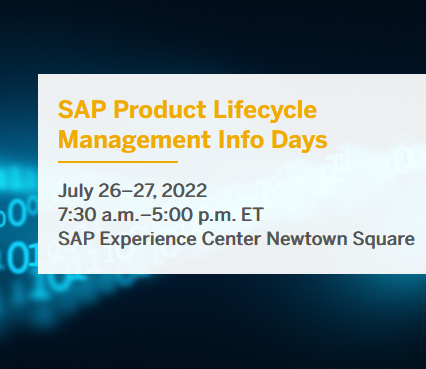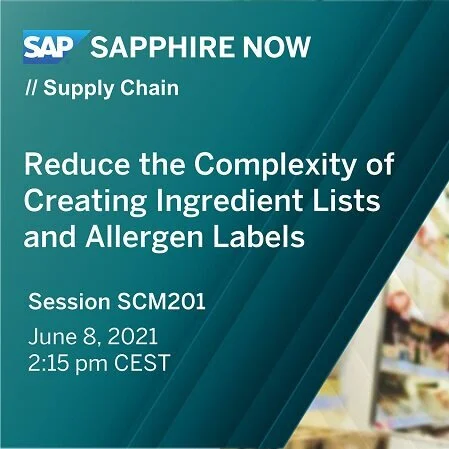BLOG: Prepare for 2025: Up Your Product Labeling Processes
Prepare for 2025: Up Your Product Labeling Processes
by Gramont Consultants I Gramont North America - October 2024
Is Your Labeling Game Ready for Anticipated 2025 Trends?
The process industry labeling ecosystem is undergoing rapid transformation, driven by technological advancements, regulatory changes, and evolving consumer expectations. As we look towards 2025, several emerging threats could disrupt this critical aspect of the industry. In this blog post, we will explore these threats and provide actionable recommendations to help businesses prepare and adapt.
Technological Advancements and Cybersecurity Risks
Threats:
The increasing digitization of labeling processes, driven by the adoption of IoT, AI, and cloud computing, brings significant benefits but also introduces new vulnerabilities. Cyber threats, such as data breaches and ransomware attacks, pose substantial risks to the integrity and security of labeling systems. The extensive network connectivity and data sharing required for modern labeling solutions can create multiple entry points for cybercriminals.
Recommendations:
1. Implement Robust Cybersecurity Measures. Invest in advanced cybersecurity solutions, including firewalls, encryption, and intrusion detection systems, to protect labeling data and systems.
2. Regular Security Audits. Conduct frequent security audits and vulnerability assessments to identify and address potential weaknesses.
3. Employee Training. Educate employees on cybersecurity best practices and the importance of maintaining data security.
Regulatory Changes and Compliance Challenges
Threats:
The regulatory landscape for labeling is continually evolving, with new standards and compliance requirements emerging regularly. Global trade dynamics and sustainability mandates further complicate compliance efforts. Companies must stay abreast of these changes to avoid costly penalties and ensure their products meet all necessary regulations.
Recommendations:
1. Stay Informed. Regularly monitor regulatory updates and industry standards to stay informed about changes that may impact labeling requirements.
2. Compliance Management Systems. Implement compliance management systems to streamline the process of adhering to new regulations.
3. Engage with Industry Groups. Participate in industry groups and forums to gain insights and share best practices for regulatory compliance.
Economic Factors
Threats:
Economic instability and market volatility can affect investment in labeling technologies. Rising costs of raw materials and production can strain budgets, making it challenging to allocate sufficient resources for labeling improvements.
Recommendations:
1. Budget Planning. Develop flexible budget plans that account for potential economic fluctuations and prioritize essential labeling investments.
2. Cost Optimization. Explore cost-saving measures, such as bulk purchasing of materials and optimizing production processes, to mitigate financial pressures.
3. Diversify Suppliers. Reduce dependency on a single supplier by diversifying your supplier base to ensure a steady supply of labeling materials.
Supply Chain Disruptions
Threats:
Global supply chain issues, including delays and shortages, can disrupt label production and distribution. Reliance on a limited number of suppliers increases vulnerability to these disruptions.
Recommendations:
1. Supply Chain Resilience. Build a resilient supply chain by establishing relationships with multiple suppliers and maintaining safety stock of critical materials.
2. Real-Time Monitoring. Implement real-time supply chain monitoring systems to quickly identify and address potential disruptions.
3. Collaborative Planning. Work closely with suppliers to develop contingency plans and ensure timely delivery of labeling materials.
Consumer Expectations and Market Trends
Threats:
Consumers are increasingly demanding transparency, customization, and sustainability in product labeling. Meeting these expectations requires more flexible and adaptive labeling solutions.
Recommendations:.
1. Transparency Initiatives. Enhance transparency by providing detailed product information, including sourcing and sustainability practices, on labels.
2. Customization Capabilities. Invest in technologies that enable customizable and personalized labeling to meet diverse consumer preferences.
3. Sustainable Practices. Adopt eco-friendly labeling materials and practices to align with growing sustainability trends.
Technological Obsolescence
Threats:
The rapid pace of technological advancements can render existing labeling technologies obsolete. Integrating new technologies with legacy systems can be challenging and costly.
Recommendations:
1. Continuous Innovation. Stay ahead of technological trends by continuously investing in research and development.
2. Scalable Solutions. Choose scalable labeling solutions that can easily adapt to new technologies and industry changes.
3. Integration Planning. Develop comprehensive integration plans to ensure smooth transitions when adopting new technologies.
Reassess Your 2025 Readiness
The process industry labeling ecosystem faces numerous emerging threats in 2025, from cybersecurity risks to regulatory changes and supply chain disruptions. By proactively addressing these challenges through robust cybersecurity measures, staying informed about regulatory updates, optimizing costs, building resilient supply chains, and meeting consumer expectations, companies can safeguard their labeling processes. Q4 is the perfect time to reevaluate your position and determine what steps need to be taken to ensure you are prepared for 2025. We’re here to support you, whether it be through our consulting services or through our market leading solutions.
At Gramont Consulting, our LabelNow solution is designed to help businesses navigate these threats effectively. LabelNow is a scalable, cloud-based application on SAP’s Cloud Platform that offers robust security features, compliance management tools, and support for sustainable labeling practices. By leveraging LabelNow, companies can enhance their labeling processes, ensure compliance, and meet the evolving demands of the market.































